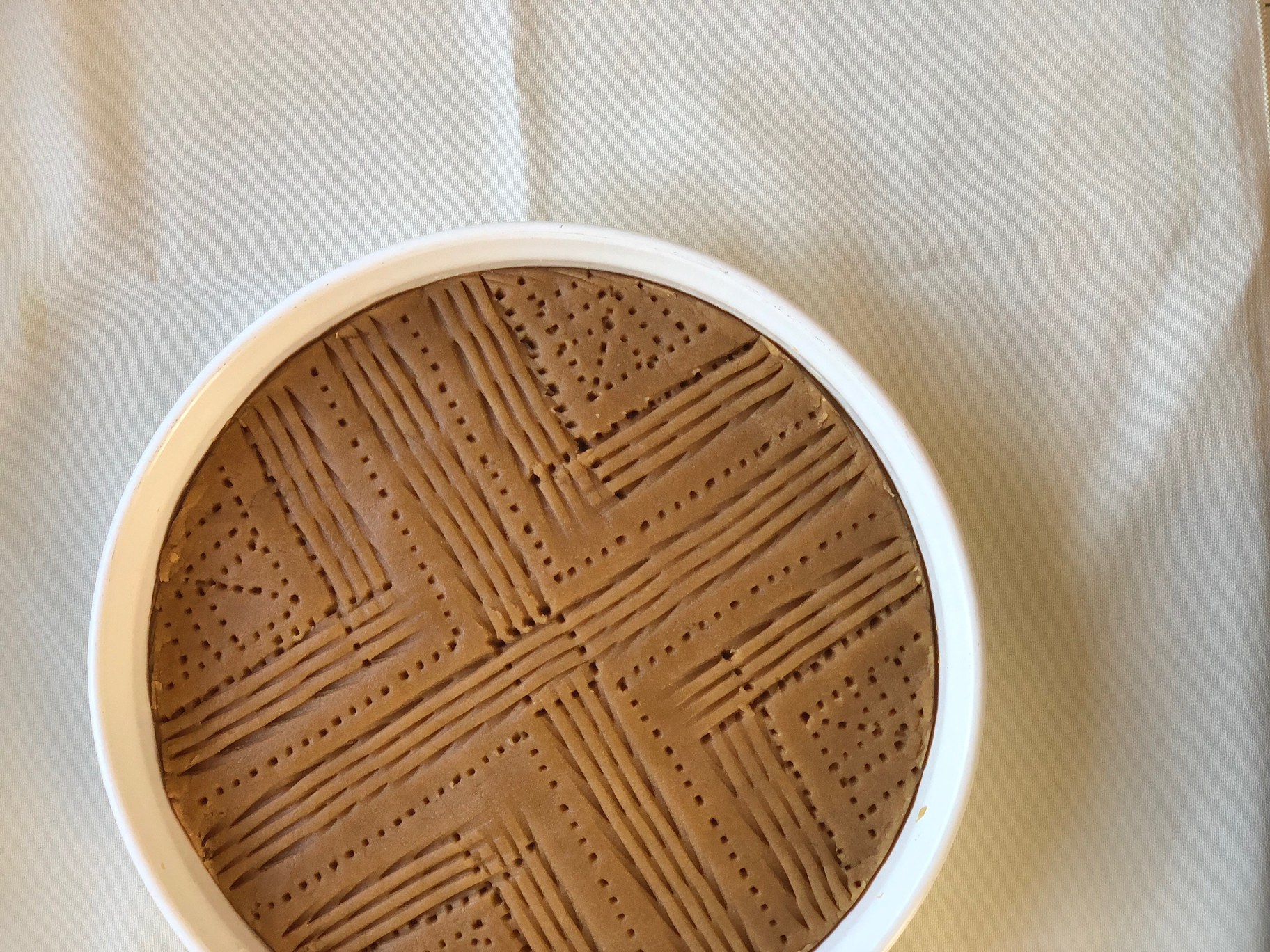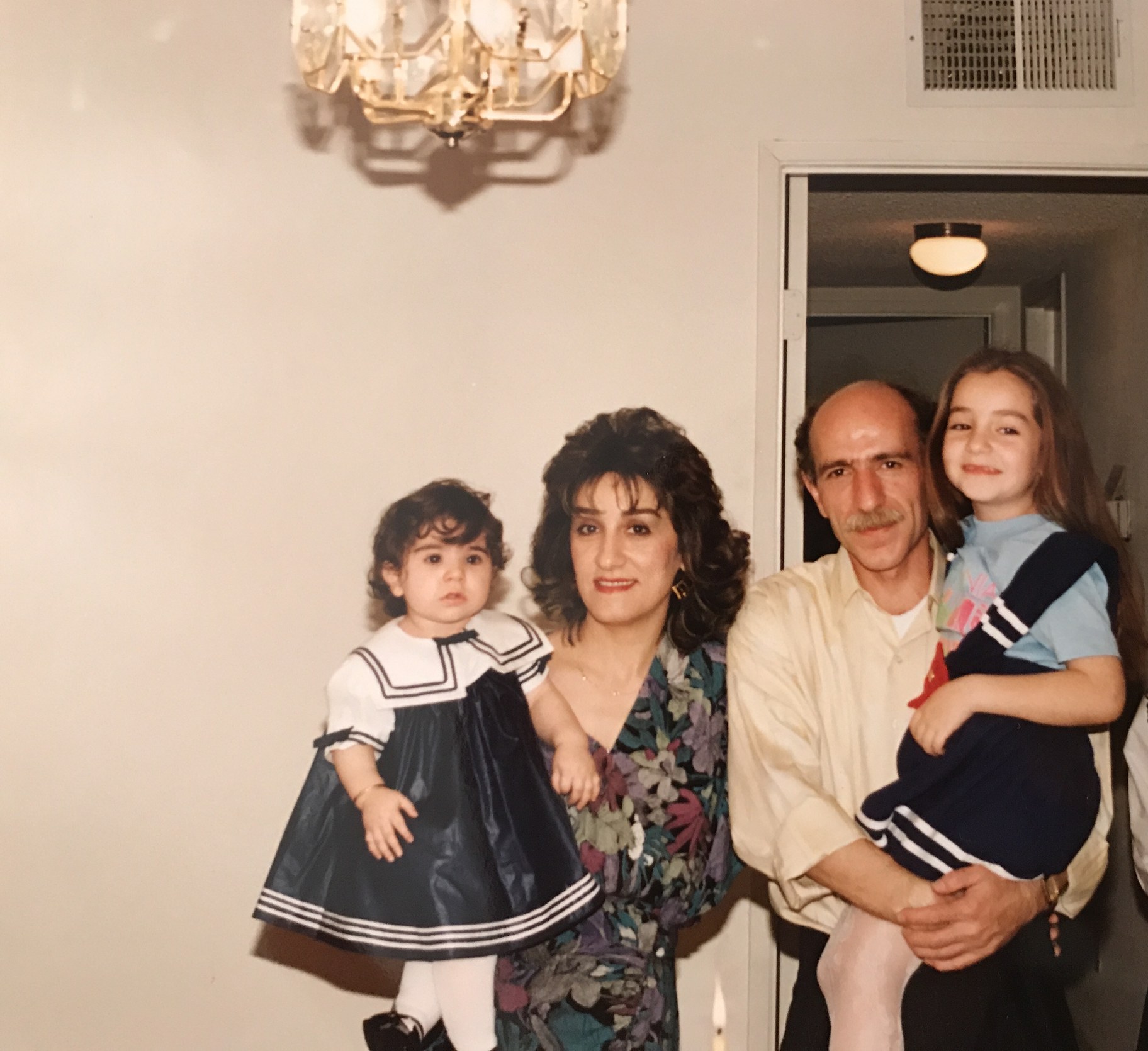Typically made from a thick paste of flour, butter or oil, then sweetened with sugar or honey and seasoned with saffron, rosewater, cocoa powder or sesame seeds, halva is a popular sweet throughout Armenia, Turkey, Azerbaijan, the Middle East and India. For journalist Liana Aghajanian, it is inexorably linked to funerals.
Born in Tehran to an Armenian family that came to the United States as refugees at the tail end of the Iran-Iraq War, she grew up in Los Angeles. She writes about her love of halva in the essay, "How Armenian Funeral Halva Helped My Family Find Home in America," which you'll find in the book "We Are All Armenian: Voices from the Diaspora."
Craving halva? Liana suggests visiting your local Middle Eastern market so you can sample a wide array of local and imported halva. Then, visit a bakery where you might be able to taste the flour version, rather than the sesame version. Still want more? Try making it at home. "It's really such a simple dish," Aghajanian says. "It requires things you already have in your pantry. All it requires from you is the dedication to get it to where it needs to be." You'll find her family recipe at the bottom of this interview.
This interview has been edited for length and clarity.
KCRW: For those of us who haven't had it, remind us what halva is.
Liana Aghajanian: Halva is essentially a class of foods that are derived from the Arabic word meaning “sweet meat.” There's many versions of it, and many ways to pronounce it. But essentially, it has some key ingredients, sometimes which include flour, sometimes it includes tahini, as well as sugar and butter, and an assortment of things that you would add to it including saffron sometimes dates, rose water, depending on on where you're from, and how it's been made in your family.
There are so many different types of halva, some, like the kind I grew up with, are made with sesame and are dense and crumbly. Others are moist and clumpy. Still other kinds of halva are almost gelatinous. What type did you grow up eating, and what was it made of?
The kind that I grew up eating, was made with very simple ingredients: butter, flour and sugar. And because it was such a popular treat in my household, my dad began to make it for us outside of us going to funerals. So he would spend hours on the stove, just cooking the flour so that it would reach a certain type of color, and then add the sugar and butter to it. After that was done, he would mold it into a dish and make a design on top. That was the one that I mostly grew up eating, although the one that is made with sesames, the commercial brands, including a very iconic one called Joyva was also present in my house.

The patterns on halva can be intricate. Photo courtesy of Liana Aghajanian.
When you talk about molding the halva, it's very distinctive. Can you describe what it looks like when it's sitting on a dish?
After all the ingredients are added and it's cooked, it kind of looks like a big lump in the pot, but very easy to mold. And so you would take that lump of flour, butter and sugar and put it in a nice dish. It could be glass or ceramic, but deep enough so that it could hold the halva, but it was essentially molded to the dish and then patted down. Once that was cooled, you could put designs on top. My family didn't do anything too fancy, just using the back of a spoon or a fork to make little designs in the halva before it was cut up into squares and divided amongst us.
So let's talk about that funeral context. For you, halva was a big part of the meal that's held after funeral services. Tell us about the meal. Can you paint a picture of it for us?
The meal is hokejosh, which in Armenian translates to a word like “soul.” Food is a time when families and close friends and relatives gather to honor the deceased with a lunch that happens after all the funeral rites have been read. Normally, in Los Angeles, if it's not at someone's house, it would be at one of the Armenian restaurants, or in my case, Armenian and Iranian restaurants in Glendale, Burbank or Pasadena. Everybody would get together, there would be a buffet, not too dissimilar from what you would serve at a wedding, for example. But obviously, the context was different. Sometimes when a portion of the food is finished, people will stand up and give a speech related to the person who has died sharing memories and thanking everybody for being there. And that lunch or dinner is what really sums up and ends the day of mourning.

Liana Aghajanian with her mother, sister and father, circa 1991. Photo courtesy of Liana Aghajanian.
So take us through the process of making it the way your dad does it.
it would start with flour – that's really what takes the longest time. Because when you put the flour in a pot on the stove, or shallow pot, you want to stir it until it turns a very particular shade of tan or beige. That's really I think that the toasted flower is what gives the whole body that very specific flavor that we craved. And so he would stand there for quite a while and stir that Hova that flower so that it would be ready for the other ingredients which would be adding butter and then sugar. Some people make the sugar into a liquid beforehand so that it kind of just blends really well. There's a lot of different methods but the thing that sticks out in my mind has always been getting the flour toasted well so that the flavor would be excellent.
Halva made in this way has always struck me as such an intentional dish to make. And when you're mourning it, it's understandable that someone would just stand in one place looking down into a pan watching this ingredient turn the right shade of color. When you make it, does it give you any comfort as you do it?
It definitely does give me comfort because I think it grounds me. I think the repetitive motion and the time that it takes to get it to that color makes me reflect on of course you know the events of who has passed in my life. I always associated with that but also how rich my family's traditions my communities traditions have been the that we tie this food to a ritual that's part of life which is death in order to make people who are mourning feel a little less upset because the essential function would be that it sweetness would take away your pain. And so all of those thoughts and emotions that are in my head have been in my head when I've made it and that time often gives me the grace to think about it. It reminds me a little bit of making yogurt too. When I make yogurt and I'm stirring, it takes me back to a place that is just kind of not in the present and connects me to a bunch of things that I often don't think about when I make other types of food.
Halva
INGREDIENTS
- 1 1/2 cup water
- 1 cup sugar
- 2 cups flour
- 3/4 cup or 1 1/2 sticks of butter, melted
INSTRUCTIONS
- In a saucepan, combine the sugar with water and bring to a boil. Remove from heat after the sugar is completely dissolved and set aside.
- In a separate pan, melt butter. While on low heat, use a wooden spoon to stir in flour continuously until it turns a light golden brown.
- Take the pan off the heat and slowly stir in the sugar mixture.
- Return back to a low heat and mix continuously until it thickens into a paste.
- Shape mixture into your serving dish of choice, flattening it with the back of a spoon.
- Use the tip of the spoon to add designs to the halvah.
- Cut in small, bite-sized diagonal pieces to serve.
